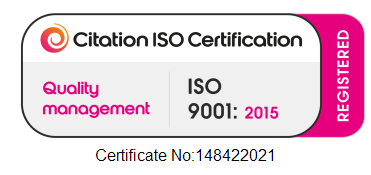Collecting patient data is essential for delivering quality healthcare—but it must be done ethically, legally, and transparently. These five patient data-collection best practices help healthcare providers and research teams protect sensitive information while maintaining trust with patients.
Patient data fuels innovation and improves outcomes, but it’s also highly sensitive. From medical histories to treatment responses, this information must be guarded like gold. Beyond regulations such as GDPR and HIPAA, ethical data stewardship builds confidence and strengthens long-term patient relationships.
1. Get Informed Consent: Be Clear and Transparent
Transparency builds trust. Before collecting data, always explain what you’re collecting, why, and how it will be used.
- Clarify which data points you’ll collect (e.g., name, diagnosis, treatment history).
- Explain the intended purpose—whether for research, care improvement, or system reporting.
- Identify who will access or share the data.
- Obtain explicit consent through signatures or digital confirmation.
Think of consent as a conversation, not just a checkbox—it empowers patients to make informed decisions about their data.
2. Strengthen Data Security: Protect It Like a Vault
Data breaches can destroy patient trust overnight. Safeguard all information through layered digital defences.
- Use encryption, access controls, and data masking to block unauthorised access.
- Schedule regular security audits to find and patch vulnerabilities.
- Ensure ongoing compliance with GDPR, HIPAA, and regional data laws.
- Train all staff on privacy and security protocols to prevent accidental exposure.
Security isn’t a one-time task—it’s an evolving commitment.
3. Ensure Data Accuracy and Integrity
Accurate data is the foundation of quality healthcare. Errors can distort results and harm patient outcomes.
- Establish processes for data validation and verification.
- Run automated quality checks to detect inconsistencies.
- Keep records up to date so patient profiles reflect current conditions.
Good data equals better insights—and better care.
4. Promote Transparency and Accountability
Patients deserve to know how their information is used. Clear communication builds long-term credibility.
- Maintain data retention policies outlining how long records are stored and when they’re deleted.
- Provide easy access for patients to review their information upon request.
- Publish plain-language privacy statements and follow them consistently.
Accountability demonstrates respect for every patient’s right to privacy.
Use Data Responsibly to Improve Patient Care
Collecting data is only valuable when it leads to better outcomes. Turn insights into action.
- Use data analytics to spot health trends, enhance diagnoses, and personalise treatment plans.
- Apply findings to research and service design, improving efficiency and innovation.
- Treat data as a tool for collaboration—linking clinicians, researchers, and patients in smarter care delivery.
Data-driven innovation doesn’t just apply to clinical settings. Wellness-focused platforms such as Viva Wellness Drip Sacramento are also demonstrating how secure, ethical data use can help tailor IV therapy, recovery, and preventive care experiences to individual needs—proof that responsible data management leads to healthier outcomes.
A data-driven approach transforms raw information into life-changing insights.
How STK Life’s eCOA Devices Support Secure Patient Data Collection
Data security and accuracy are central to clinical research—and STK Life’s eCOA smartphones and tablets for clinical trials are engineered precisely for that purpose.
These purpose-built devices streamline the capture of Electronic Clinical Outcome Assessments (eCOA) while maintaining full compliance with global regulations.
Key Advantages of STK Life Devices:
- Secure Devices for Clinical Trials: Built-in encryption and data-protection layers safeguard patient information throughout the trial process.
- Customisation for Compliance: Configurable to meet GDPR, HIPAA, and regional legal frameworks.
- Remote Data Collection: Patients can safely submit outcomes from home, maintaining both convenience and accuracy.
- Seamless Integration: Easily connects with existing clinical platforms for real-time monitoring and analysis.
- Continuous Monitoring with Wearables: Enables round-the-clock data capture without compromising security.
Healthcare organisations seeking higher reliability can also explore secure mobile devices for research data collection and smartphones built for healthcare and clinical environments —two additional STK Life solutions proven to deliver safe, compliant, and consistent performance.
By adopting secure, compliant technology like STK Life’s eCOA devices, healthcare providers ensure patient trust while collecting high-quality data that drives better research and outcomes.
Frequently Asked Questions About Patient Data Collection
How should we obtain informed consent for patient data collection?
Before collecting any data, explain clearly what information will be collected, why it’s needed, and how it will be used. Patients should also know who will have access to their data. Always obtain explicit consent—either through a signed document or secure digital confirmation—to ensure transparency and trust.
What security controls are essential to keep patient data safe?
Protect sensitive data using encryption, access controls, and data masking. Conduct regular security audits to identify vulnerabilities early and maintain GDPR and HIPAA compliance. Continuous staff training on privacy protocols helps prevent accidental breaches and keeps everyone aligned with security standards.
How do we ensure data accuracy and integrity in clinical settings?
Implement validation and verification processes to check for errors or missing information. Use automated quality checks and update records regularly to reflect patients’ current health status. Data accuracy ensures reliability and improves the overall quality of clinical decisions.
What are best practices for transparency, retention, and access?
Be open about how long data will be stored, who can view it, and what happens when it’s no longer needed. Publish a clear data retention policy, and allow patients to easily request or review their information. Transparency fosters confidence and meets regulatory expectations.
How can data be used responsibly to improve patient care?
Leverage analytics and data insights to identify patterns, enhance diagnoses, and personalise treatment plans. Always apply privacy-by-design principles, ensuring that improvements to care never compromise data protection. Responsible data use benefits both patients and providers.


